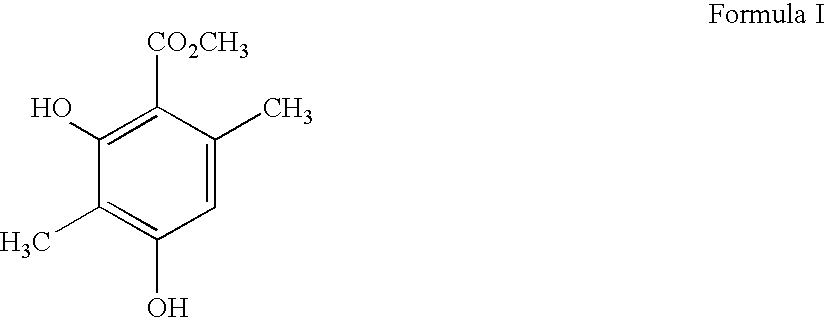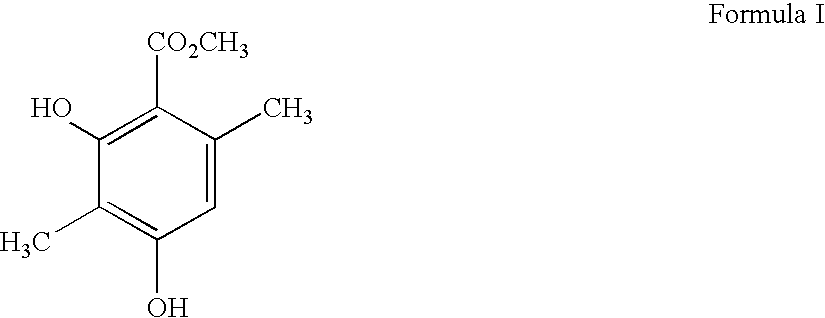Antimicrobial and anticancer properties of methyl-beta-orcinolcarboxylate from lichen (Everniastrum cirrhatum)
a technology of methylbeta orcinol and li, which is applied in the field of anticancer properties of methylbeta orcinolcarboxylate from lichen, can solve the problems of unsustainable industrial harvests, low anticancer activity, and inability to meet the needs of many species, and achieves the effect of inhibiting the growth of polyene and disrupting membrane integrity
- Summary
- Abstract
- Description
- Claims
- Application Information
AI Technical Summary
Benefits of technology
Problems solved by technology
Method used
Image
Examples
Embodiment Construction
[0040] 1. Isolation of Polyene Drug Resistant Mutant Strains of Candida Albicans MTCC 1637 (Equivalent to ATCC 18804)
[0041] C. albicans was grown to log phase in Sabouraud's dextrose broth (5 ml) for 48 hrs at 37.degree. C. in a shaker at 250 rpm. The cells were pelleted by centrifugation at 5000 rpm at 4.degree. C. and the pellet was dissolved in 5 ml phosphate buffered saline PBS (6.8 pH). The culture was divided in to five groups of 1 ml each in eppendrof tubes.
[0042] Ethyl methane sulfonate (EMS) was added to each of the culture tube @ 0.1% (v / v) and allowed to grow for 40 min. Then the mutagen was completely washed off thrice by repeatedly pelleting the cells and re-dissolving in PBS. The mutagenized stocks was then diluted in Sabouraud's dextrose broth two folds and allowed to grow for 6 hrs at 37.degree. C. in a shaker at 250 rpm. Titre of the cells before treatment with EMS and immediately after treatment with EMS was calculated to obtain the killing percentage in each of th...
PUM
| Property | Measurement | Unit |
|---|---|---|
| Length | aaaaa | aaaaa |
| Length | aaaaa | aaaaa |
| Length | aaaaa | aaaaa |
Abstract
Description
Claims
Application Information
 Login to View More
Login to View More - R&D
- Intellectual Property
- Life Sciences
- Materials
- Tech Scout
- Unparalleled Data Quality
- Higher Quality Content
- 60% Fewer Hallucinations
Browse by: Latest US Patents, China's latest patents, Technical Efficacy Thesaurus, Application Domain, Technology Topic, Popular Technical Reports.
© 2025 PatSnap. All rights reserved.Legal|Privacy policy|Modern Slavery Act Transparency Statement|Sitemap|About US| Contact US: help@patsnap.com



